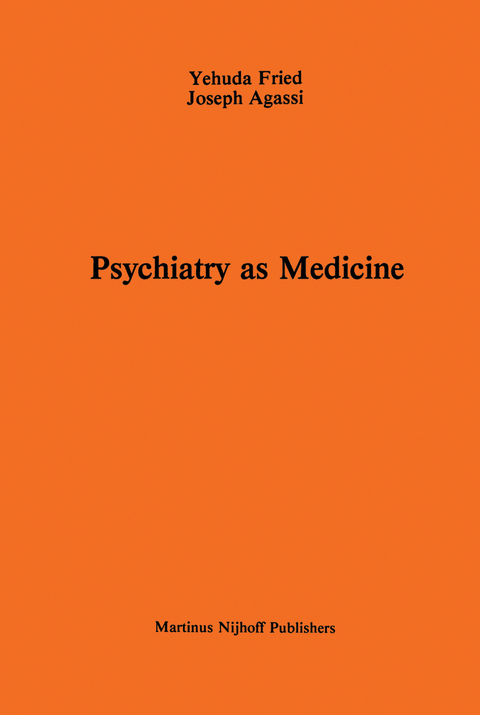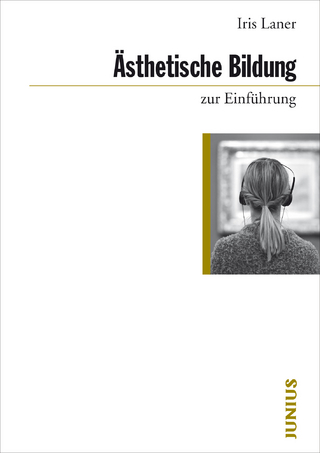
Psychiatry as Medicine
Kluwer Academic Publishers (Verlag)
978-90-247-2837-4 (ISBN)
PREFACE This volume is a sequel to yet independent of our Paranoia: A Study in Diagnosis, Reidel, Dordrecht and Boston, 1976. Whereas our first book centered on diagnosis, this centers on treatment. In our first volume, all discussions of nosology (theory of illness) and of treatment was ancillary to our discussion of diagnosis; similarly all discussion of this volume dealing with nosology - there is very little on diagnosis here - is ancillary to our discussion of psychotherapy. It is still our profoundest conviction that to speak of treatment without diagnosis is meaningless, if not irresponsible, since otherwise one does not know what one is talking about. Hence, our present study, though it centers on theories of treatment, links psychotherapy with psychopathology. It is the rationale of psychotherapy which is of importance, and the rationale dwells in this link. We wish our present study to be self-contained and understood by readers who are not familiar with our first book - or with any specific literature. Our discussion of medicine in general, meaning the rationale of therapy in general, helps the uninitiated reader, as well as the initiated, we hope: it certainly has helped us. We did not see how else can we study a branch of medicine; we felt the need for some idea of how medicine is supposed to work.
Summary and Conclusions.- I. Medicine:.- II. Psychiatry:.- Introduction:.- 1. The History of Ideas in Psychotherapy.- 2. What is Psychotherapy.- I. Generalism versus Externalism: The Concept of Disease.- 1. Introduction: Antipsychiatry.- 2. Hippocrates.- 3. Sydenham.- 4. Claude Bernard and Pasteur.- 5. John Hughlings Jackson.- 6. Cannon.- 7. Conclusion.- II. Contemporary Schools of Psychopathology.- 1. Introduction.- 2. Freud.- 3. Adler.- 4. Pavlov.- 5. Existentialism.- 6. Laing.- 7. Ey.- 8. The Buberians.- III. The Rise of Scientific Psychotherapy.- 1. First Introduction: Frameworks, hypotheses, facts.- 2. Second Introduction: The Pseudo-Scientific Character of Che- mopsychotherapy.- 3. Beginnings: Pinel.- 4. Esquirol.- 5. Charcot’s Externalism.- 6. Charcot’s Psychiatry and its Antecedents.- 7. Charcot’s Generalism in Psychiatry.- 8. Hysteria from Janet Babinski to Slater.- 9. Freud as a Disciple of Charcot.- IV Trends in 20th Century Psychotherapy.- 1. Freud.- 2. Psychotherapy: The Catharsis Theory.- 3. What is Psychology? or: the Uniqueness of Freud, regardless.- 4. The Neo-Freudians.- 5. Post-Cathartic Psychoanalysis is Adlerian.- 6. Jung is beyond our comprehension.- 7. The Psychoanalytic Treatment of Psychotics: Background.- 8. The Psychoanalytic Treatment of Psychotics: Therapy.- 9. Antipsychiatry and All That.- 10. The Medical Model Revisited.- 11. Behavior Modification and its Derivatives.- V. Conclusion.- 1. A Medical View of Psychic Ills.- 2. Psychiatry as medicine.- 3. The State of the Art: Descriptive.- 4. The State of the Art: Critical.- 5. The State of the Art: Hopeful.- Name Index.
| Erscheint lt. Verlag | 31.7.1983 |
|---|---|
| Zusatzinfo | X, 192 p. |
| Verlagsort | Dordrecht |
| Sprache | englisch |
| Maße | 155 x 235 mm |
| Themenwelt | Geisteswissenschaften ► Philosophie |
| Geisteswissenschaften ► Psychologie | |
| Sozialwissenschaften ► Ethnologie | |
| ISBN-10 | 90-247-2837-1 / 9024728371 |
| ISBN-13 | 978-90-247-2837-4 / 9789024728374 |
| Zustand | Neuware |
| Haben Sie eine Frage zum Produkt? |
aus dem Bereich


